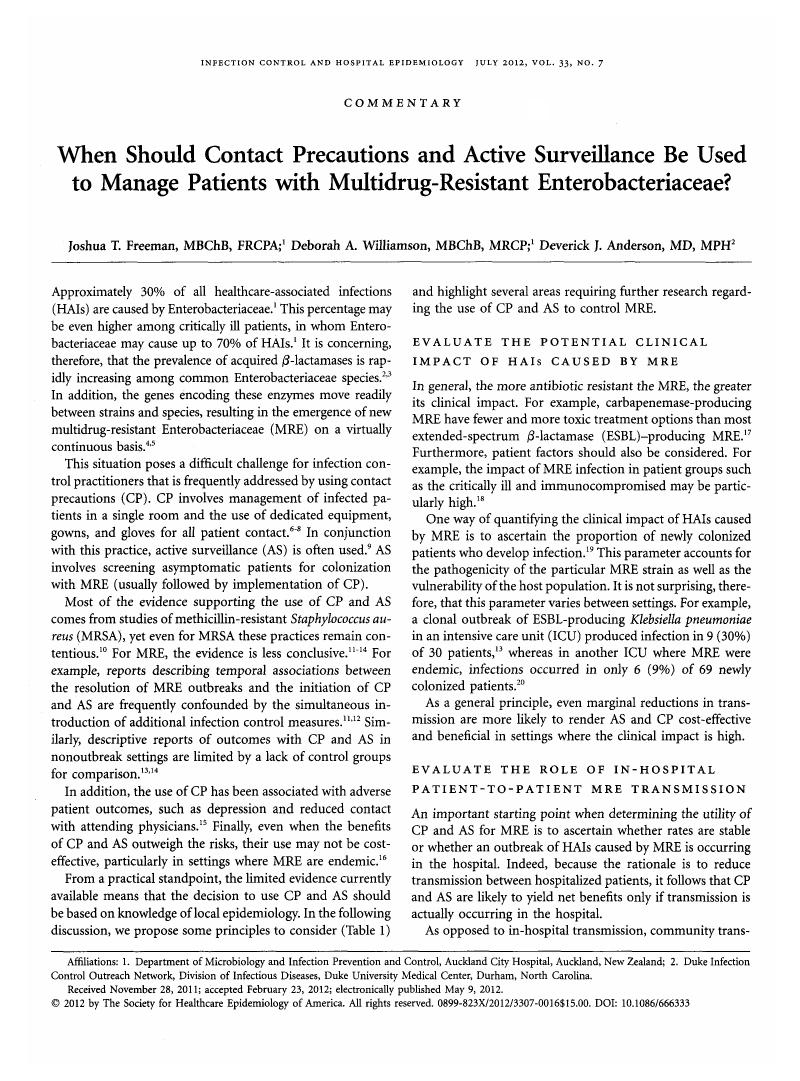Crossref Citations
This article has been cited by the following publications. This list is generated based on data provided by Crossref.
Freeman, J.T.
Gormack, S.
De Almeida, M.N.
and
Roberts, S.A.
2013.
Natural history of rectal colonisation with extended- spectrum beta-lactamase producing Enterobacteriaceae: a retrospective review with up to 6 years of follow-up.
Healthcare infection,
Vol. 18,
Issue. 4,
p.
152.
Freeman, Joshua T
Nimmo, Jessica
Gregory, Eva
Tiong, Audrey
De Almeida, Mary
McAuliffe, Gary N
and
Roberts, Sally A
2014.
Predictors of hospital surface contamination with Extended-spectrum β-lactamase-producing Escherichia coli and Klebsiella pneumoniae: patient and organism factors.
Antimicrobial Resistance and Infection Control,
Vol. 3,
Issue. 1,
Rogers, Benjamin A.
Havers, Sally M.
Harris-Brown, Tiffany M.
and
Paterson, David L.
2014.
Predictors of use of infection control precautions for multiresistant gram-negative bacilli in Australian hospitals: Analysis of a national survey.
American Journal of Infection Control,
Vol. 42,
Issue. 9,
p.
963.
Martelius, Timi
Jalava, Jari
Kärki, Tommi
Möttönen, Teemu
Ollgren, Jukka
and
Lyytikäinen, Outi
2016.
Nosocomial bloodstream infections caused byEscherichia coliandKlebsiellapneumoniaeresistant to third-generation cephalosporins, Finland, 1999–2013: Trends, patient characteristics and mortality.
Infectious Diseases,
Vol. 48,
Issue. 3,
p.
229.
Hernández-García, Marta
Díaz-Agero, Cristina
Pérez-Viso, Blanca
Sánchez, Ana María
López-Fresneña, Nieves
Morosini, María Isabel
Ruiz-Garbajosa, Patricia
and
Cantón, Rafael
2021.
Implementation of contact isolation strategy for the containment of extended-spectrum β-lactamase carriers in a University Hospital positively affects the epidemiology of carbapenemase-producing Enterobacterales.
Enfermedades infecciosas y microbiologia clinica (English ed.),
Vol. 39,
Issue. 9,
p.
429.
Hernández-García, Marta
Díaz-Agero, Cristina
Pérez-Viso, Blanca
Sánchez, Ana María
López-Fresneña, Nieves
Morosini, María Isabel
Ruiz-Garbajosa, Patricia
and
Cantón, Rafael
2021.
Implementation of contact isolation strategy for the containment of extended-spectrum β-lactamase carriers in a University Hospital positively affects the epidemiology of carbapenemase-producing Enterobacterales.
Enfermedades Infecciosas y Microbiología Clínica,
Vol. 39,
Issue. 9,
p.
429.





